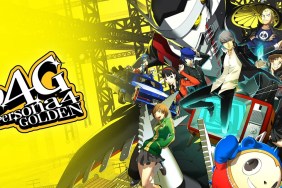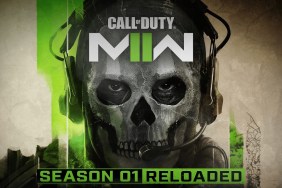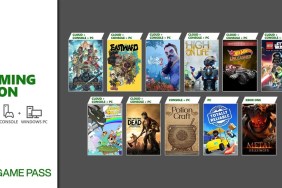A black belt only covers two inches of your ass. You have to cover the rest.
Very little in THQ’s premium catalog would suggest their commitment to the one quality that sets their upcoming UFC Undisputed 2010 apart from every other fighting title: realism. The WWE Smackdown vs. RAW and MotoGP series would be the closest comparisons at trying to reproduce reality, but the former is more about fighting theatrics and the latter has been in the hands of Capcom ever since 2007. But seeing THQ and Yuke’s place realism at the top of the list shouldn’t be too surprising, since Ultimate Fighting Championship – let alone Mixed Martial Arts – is a bona-fide sport. In fact, it’s as real as it gets.
[image1]Players who pick up UFC Undisputed 2009 for the first time and immediately drop the controller after one match tend to have an aversion to its complexity, especially when compared to other popular fighting games like Street Fighter which have simple one-to-one controls – one button is punch, another is kick, and so on. Even those who play the game for several days generally rely on standing strikes for instant knockouts rather than learning the intricacies and patience of the submission system. Recognizing and recalling all of the guard positions, not to mention their hierarchy and various subset of moves, before you or your opponent change the guard position, is a feat in itself. Of course, that’s what happens when a game must combine more than ten different martial disciplines to represent MMA correctly – it should be complicated.
This is an important point, because then simplification cannot be the solution. So the only other route developer Yuke’s can take is to refine the complex gameplay to the point that it feels effortless, which they have done brilliantly so far. Every animation has been reworked and the improved fluidity between each move shows. Fighters in standing position can now sway their upper bodies away from an attack for a quick counter; in ground positions, the fighter with the advantage can also move his upper body, higher to gain more offensive power or lower to prevent the opponent from escaping. Better yet, most defensive maneuvers have been mapped to one command (back on right analog stick), making them less of a guessing game.
Similarly ambitious, tons of additions bring what was blatantly missing from last year’s gameplay. Not only has the roster of fighters been practically completed with over 100 fighters spread across five weight classes, but fighters are also no longer tied to two specific styles of standing and grappling fighting. This change is key, because each MMA fighter in real-life has a unique fighting style, from bits and pieces of various martial arts woven together to resist disadvantage.
New ground positions like the Butterfly Guard and The Salaverry, and submissions like the Arm Trap RNC, Peruvian Neck Tie, D’arce Choke, and other fighter signatures, have been ceremoniously added to the move list. Muay Thai players will be glad to know that standard clinches are now much harder to escape from and have been given more variations of position.
[image2]In the previous iteration, the presence of the cage went halfway. Sure, it served as a boundary, but it had an invisible wall in front of it, which is noticeably unlike real UFC matches that can have fighters scrunched up against a chained cage for an entire round. Now, a fighter can end up leaning against the cage in an uncomfortable position where the opponent has the upper hand, though defensively the fighter against the cage can’t be taken down easily. On the ground, a grappler can use his feet against the cage as a transition into a better position, great for crafty jiu-jitsu experts.
Some players will spend some time cruising through the new Title Mode, which is essentially the traditional Arcade mode in most fighting titles. Players are pitted against increasingly more difficult opponents, rising from a rookie to a champ within one couch sitting. Once the belt is around their waist, they can test their skill in Title Defense mode, a survival variant where the player faces groups of three fighters with health recovery in between bouts.
But most players will invest the majority of their time in the revised career mode and create-a-fighter-system, both of which take a huge leap forward. No longer does plastering a sponsorship logo on your fighter’s shorts force you to navigate through ten or so sub-menus; in place now is the much more user-friendly creation system from THQ’s Smackdown vs. RAW series or even WWF No Mercy for N64. There is no explicit layering system other than for tattoos and logos on clothes, and there is an unlock store for additional clothing, taunts, nicknames, and actual first and last names that the announcer will speak aloud. (They currently have “Tan” but no “Nick” or “Nicholas”. This needs to be rectified.)
For your curiosity, you can create fighters from a 5’4” lightweight to a 6’8” heavyweight, with all of the maximum stat restrictions from before, and can alter almost everything about your fighter as long as it’s close to realistic. No purple aliens with a white afro in pink-yellow polka dot Speedos here. Through the new flexible movesets, you can choose your fighter’s style from a list of skills from all martial arts like a menu a la carte. Like in Fight Night, a fighter created strictly for exhibition is instantly battle-ready but has a limited number of attribute points, enough to increase all stats to 57 and all skills to 65; a fighter created for career starts out as a wimpy wannabe but given enough time can become a UFC legend with stats and skills far greater than any MMA fighter, even Fedor.
[image3]In pursuit of greatness, career fighters will begin as a trainee in a no-name gym before choosing a set difficulty and progressing through the World Fighting Alliance and ultimately (see what I did there?) the UFC. It works generally the same as last year’s career mode with the fighter pitted in the octagon during UFC events and training on stats, sparring for skills, and visiting a fighting camp for new moves during weeks off on the calendar.
New this year is a conditioning rating, an addition to fatigue, as well as ability decay which lowers a fighter’s stats and skills if specific training is ignored for too long. Thankfully, any ability that reaches a threshold at 30, 50, and 70 won’t decrease below that. Fighters can train against a specific opponent by choosing a game plan that will change stats temporarily. Between bouts, there is plenty of commentary, cut-scenes, and events with UFC figures – interviews, weigh-ins, and post-fight dialogue where you can choose to respect or disrespect an opponent. Make the right choices and win matches, and you’ll build your popularity and cred along the way, unlocking sponsors, better training options, and eventually a title shot and a chance to enter the Hall of Fame.
Apart from the new Tournament mode and Event mode, where you can build your own UFC event card, players can join together in online fighting camps. There, friends and perfectionists can spar against each other, create logos and banners which will appear in the fight introductions, and check out specific fighter camp leaderboards (some ranked by the combined win-loss record of all fighters in that camp).
Yuke’s and THQ didn’t just set out to beat UFC 2009 Undisputed; they set out to crush it. The length of this preview alone (I even cut some things out) should make you understand how much content has been packed into this year’s installment. Pre-ordering it at GameStop will get you five bonus fighters, and the PS3 version will have additional Ultimate Fights (an updated Classic Fights mode) and UFC legends Royce Gracie, Jens Pulver, and Dan Severn. Check for UFC Undisputed 2010 to hit stores before you know it on May 25, 2010.










